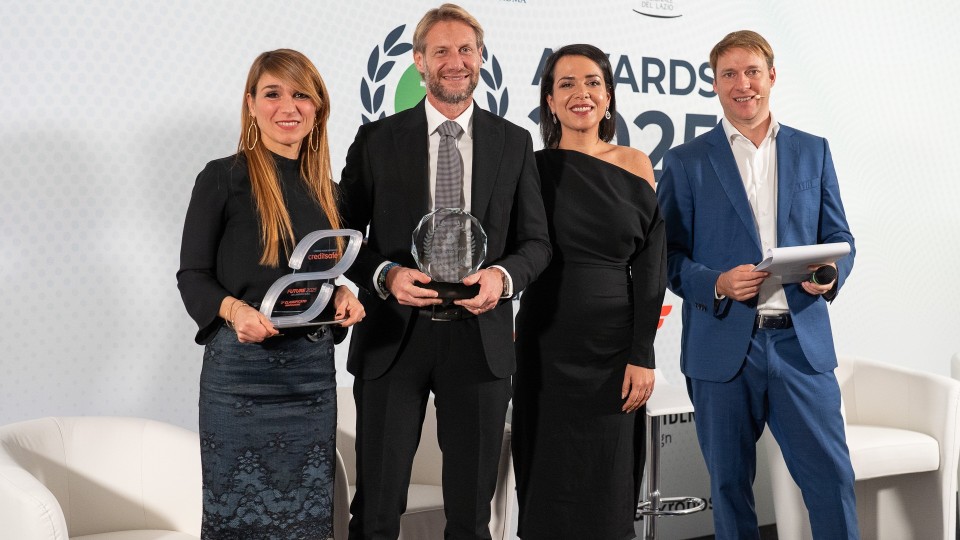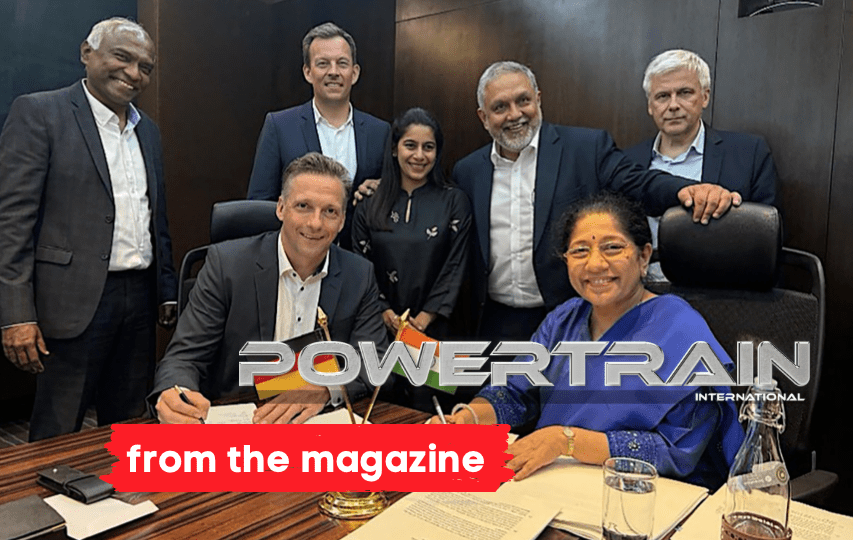Comparisons: around 7.5 liters
7.5 L can’t be said to be a perfect capacity; it was once associated with splitting the 1L cylinder displacement, and, in the last 15 years, to the super-compact 4 cylinder with a 800-900 cc unit volume. Yet, when we thought of comparing the Core75 by AGCO Power with its equally sized peers, in this segment we found Kubota and, slightly above or below, also Cummins, Deutz, Hyundai Doosan Infracore, Isuzu, Rolls-Royce and Volvo Penta. Read the full article in the May issue of Powertrain International.

7.5 liters can’t be said to be a perfect capacity; it was once associated with splitting the 1L cylinder displacement, and, in the last 15 years, to the super-compact 4 cylinder with a 800-900 cc unit volume. Yet, when we thought of comparing the Core75 by AGCO Power with its equally sized peers, in this segment we found Kubota and, slightly above or below, also Cummins, Deutz, Hyundai Doosan Infracore, Isuzu, Rolls-Royce and Volvo Penta. Considering the 7L also eligible, we mustered Caterpillar and Perkins, too. At that point, the energized B6.7 by Cummins couldn’t be left out, and neither could a couple of regulars on these pages such as FPT Industrial and John Deere Power Systems. The line-up for the 13 competitors will take the entire opening double-page spread.
A few premises: the first about Isuzu, updated to Tier 4 Final/Stage V also for its 6HK1; Hyundai DI remixed its marine product list and is ready to get serious about stationary engines, too. For the time being, the Korean 7.6L can defend itself against the most renowned names of this segment. As some 10 years ago the triad of compact G2 (D18, D24 and D34, over half a million units produced) made its presence felt, first in Bobcat’s captive acquisition, then on the free market (just think of Goldoni Keestrack), we can’t rule out the possibility that the DL08 software gets revisited to optimize thermodynamic performance or even converted to run on hydrogen or paraffinic fuels. It will so depend on HDI’s plans: currently the mother company is tied to Cummins as engine provider for excavators and the entire Hyundai’s earthmoving equipment range.
That same Hyundai Doosan Infracore that unveiled their 11L, 300kW hydrogen engine at ConExpo, featuring 1700 Nm of torque at 2000 rpm. Isuzu does not lack technology nor reliability. Fully fitted with an EGR valve and catalyst for both fumes and NOx emissions, it would probably need to push the pedal a bit on MEP and include a particulate matter filter to get Stage V compliant and get loose from its bottom position on the Diesel Index ranking; a place that’s pretty crowded, with seven contenders in the space of half a decimal, with scores ranging from 7.6 to the highest value, 8.2, awarded to Rolls-Royce Power Systems. But let’s get back to the Finnish engine that marked the opening of a new season in AGCO Power’s engine-making strategy: the Core75. An engine block that does not make it to the podium based on the comparison’s indices, but yet stands out for its torque, reaching second place behind mtu, climbing up the list thanks to torque at max power.
Compared to the three top positions, it pays a toll in power curve comparison and climbing the rankings in terms of torque at maximum power. Not bad either is the power rating, which sees it catching up with Volvo and looking over the shoulders of only the German duo Deutz and Rolls-Royce Power Systems. A strategy oriented towards the agricultural scenario in the first instance. After all, the first application of this 1.25 cubic decimeter cylinder displacement was Fendt 728 Vario, winner of Tractor of the Year 2023. But there’s more to this engine’s architecture than just thermodynamic performance.
Quoting AGCO Power Marketing Manager Tommi Puomisto, we approached at Bauma Munich: “It’s a fact that the technology on the market is not 100% ready for carbon neutrality, but we need to take all steps to get it closer to it. Specific consumption is 188 g/kwh – we’ll be happy to compare it to that of any other competitor with publicly accessible technical datasheets. Specific consumption values are often higher than 200 g/kwh”.
Side by side with Core75, the 84 LXTN, an 8.4L delivering 313 kW at 1850 rpm and 1750 Nm at 1500 rpm, certified to “digest” 100% HVOs. As for the fastest horse mentioned above, it goes by the name of Rolls-Royce’s 7.7 L, designed during the Tognum era, on the eve of the equal partnership agreement between the Brits and Daimler, which eventually went in favour of Rolls-Royce. A six-cylinder engine that earned consensus especially in the earth moving sector, as testified by JCB and Kato, among others. Back in 2013 Diesel of the Year was awarded to its big bro, 6R1500. Boasting advanced electronics, that Rolls-Royce took in from on-road platforms (the OM936 is its alter-ego) to be reproduced on the marine range, adjusting it to fit the “pleasure boating” requirements of the 2000 Series, it optimizes airflow in the common rail (back in those days, Tognum could count on the expertise of sister company L’Orange) – as well as in the blower.
The manufacturers’ “baby boy”, then, reflects the painstaking care for fundamentals that’s typical of this engine family that’s been representing mtu in mobile industrial applications for over ten years now. After-treatment gets squeezed into one single module. Twin birth for the Cat-Perkins duo – a 7L that finds its place mostly in captive applications for the former, while the latter with its 1206-ETTA boldly tackles the flexible domain of building machinery. It pays a toll in terms of elasticity but size-wise it gets rewarded, as can be seen from volume – 0.76 cubic metres – and Compactness Index, both waving the Union Jack flag.
Joining the singalong in tune with Core 75 are two other Germans: MAN and Deutz. A couple of years ago, Cologne officially entrusted its champion with spearheading the hydrogen frontline. The TCG 7.8 H2 was presented at Deutz Days held at the Coreum in Stockstadt and is nearing start of production as of next year. Markus Müller, Chief Technology Officer of Deutz AG, explained: “The six-cylinder TCG 7.8 H2 is based on an existing engine design. Generating a power output of 200 kW, it runs carbon-neutral and very quietly. In principle, the engine is suitable for all current Deutz applications, but due to the available infrastructure it is likely to be used first in stationary equipment, generators, and rail transport.”
In the meantime, its primordial diesel version still holds its balance, especially in terms of specific power and torque. The D08 by MAN doesn’t look as brilliant as its more muscular counterparts – meaning D26, D38 and D42. The ingredients are, however, the same: a painstaking care for exhaust gas recirculation, a 2500 bar rail fitted with a Bosch EDC17 control unit, and the replacement of the VGT with a less complicated wastegate valve. The Lion-branded unit looks pretty lean, with only 642 kg of weight, but also fairly less sexy than its competitors if we speak about curves.
Volvo Penta reaffirms the sturdiness of its engine block and a design that’s meant to minimize hassles during operation: temperature control to ease the burden on the radiator core, modular interfaces – which means compatibility with previous standards – replacement intervals set as 1000 hours.
Now we go down as step in displacement. Despite that, Cummins is at the heels of Rolls-Royce, thanks to the powerful testosterone shot that boosted the 6.7 L Stage V performance by as much as 30% compared to its Stage IV peer. As all the units in the Performance Series, the B6.7 is included in the Encompass Extra scheme, offering a warranty extension up to 5 years and unlimited hours of operation.
Lastly, the remaining six-cylinder featuring a 1.2-cylinder displacement. FPT Industrial with their NEF, on which the EGR gets officially dismissed, and John Deere’s PSS that, instead, does not disavow gas recirculation and combines it with a VGT for turbocharging, which doubles at peak power – those 224 kW you’ll find in the table.
TO READ THE FULL ARTICLE CLICK HERE OR DOWNLOAD THE PDF







